You found our list of diversity and inclusion books.
Diversity and inclusion books are works that teach professionals how to navigate race, gender, age, physical ability, religion, and sexual orientation in the workplace. These guides teach respect, compassion, and dignity. The purpose of these books is to create an inclusive and equitable work environment.
These books focus on the benefits of diversity and inclusion in the workplace and include DEI quotes. For similar topics, check out HR books, books on training and development and team building books.
This list contains:
- diversity books
- books on diversity and inclusion
- DEI books
- best selling books on diversity and inclusion in the workplace
Check it out!
List of diversity and inclusion books
From new releases to bestsellers, here are the best books on diversity, equity, and inclusion for the workplace.
1. The Loudest Duck: Moving Beyond Diversity while Embracing Differences to Achieve Success at Work by Laura A. Liswood

The Loudest Duck is one of the most popular workplace diversity books on the market. The book advocates for a meaningful approach to diversity. For example, by urging leaders not only to hire distinctive candidates, but to recognize and appreciate the strengths in those differences.
Laura Liswood illustrates the scope of diversity in the workplace and suggests actionable steps to build inclusive organizations. The Loudest Duck offers a set of practical tools to help managers and colleagues understand and respect different viewpoints. The author challenging readers to notice subtle inequities and overturn ingrained ways of thinking.
Notable Quote: “Companies are ultimately looking for increased creativity, better ideas, and multiple perspectives, so they will in fact benefit from diversity. However, we will see that achieving this takes much more effort than merely assembling a workplace that looks like Noah’s ark.”
Buy The Loudest Duck.
2. Belonging At Work: Everyday Actions You Can Take to Cultivate an Inclusive Organization by Rhodes Perry
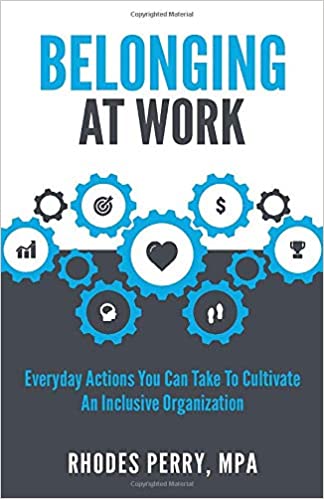
A sense of belonging is both a universal human need and a major motivator. Employees perform to their full potential when they feel accepted and celebrated for their authentic selves. Belonging At Work is a guide to creating inclusive workplaces. The book suggests simple actions leaders can take to make employees feel comfortable and capable on the job.
Notable Quote: “Cultivating a sense of belonging doesn’t stop with our employees. Serving our markets, or our clients and customers, and responding to their needs in a respectful and intentional manner assures an organization’s long term relevancy, helping them thrive into the future.”
Buy Belonging At Work.
3. How to Be an Inclusive Leader: Your Role in Creating Cultures of Belonging Where Everyone Can Thrive by Jennifer Brown
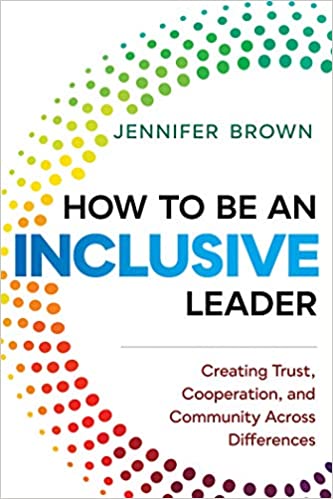
How to Be an Inclusive Leader is one of the best-selling diversity in leadership books. Jennifer Brown lays out the manager responsibilities for creating cultures where every employee feels welcomed and empowered. The book offers a comprehensive step-by-step guide to acknowledging privilege and preconceptions, advocating for employees, and amplifying lesser heard voices.
Notable Quote: “Inclusive leaders at the Advocate level consider diversity at all levels, in every gathering or format, and are especially aware of the sometimes-outsized impact of a single action, delivered in their particular voice.”
Buy How to Be an Inclusive Leader.
4. Inclusion: Diversity, The New Workplace & The Will To Change by Jennifer Brown
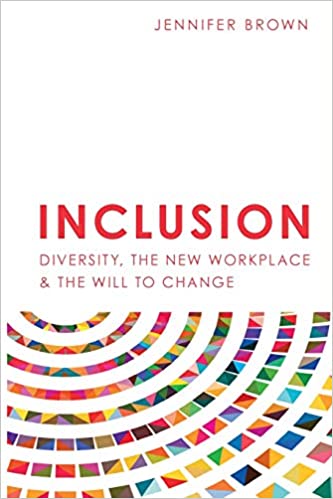
Inclusion: Diversity, The New Workplace & The Will To Change acknowledges that change is hard, but necessary. The global landscape is ever-shifting, and inclusive workplaces are the way of the future. The momentum towards more diverse companies will not slow or reverse, and tomorrow’s most successful organizations embrace this fact. Change is never easy though.
This book envisions a future where all employees feel welcomed, appreciated, and acknowledged, but only after the workforce overcomes current discomforts and roadblocks. This book presents strategies to help workers and executives appreciate the need for increased diversity and inclusion, both for the sake of underrepresented employees and the business’s bottom line.
Notable Quote: “The best first step toward designing a successful inclusion strategy for a diverse workplace is to listen to what your employees are saying. It seems obvious, but true listening is in short supply in our frenetic, hierarchical world.”
Buy Inclusion: Diversity, The New Workplace & The Will To Change.
5. We Can’t Talk about That at Work!: How to Talk about Race, Religion, Politics, and Other Polarizing Topics by Mary-Frances Winters

Race, religion, and politics are sensitive subjects. Many folks steer clear of these topics at work altogether rather than risk offending or upsetting colleagues. However, ignoring the issues is not always the answer. We Can’t Talk about That at Work! makes the case for talking about these subjects with tact rather than skirting the subject. Mary-Frances Winters argues that it is not what we talk about, but how we talk about it that matters. We Can’t Talk about That at Work! is a guide for starting productive, inclusive conversations that respect differences, find common ground, and take the first steps towards healing invisible divides in the work world.
Notable Quote: “Do you experience a sense of fear when engaging in bold conversations? If so, ask yourself, “What am I afraid of?” These questions are relevant whether you are a member of a dominant or non-dominant group.”
Buy We Can’t Talk about That at Work!
6. The Leader’s Guide to Unconscious Bias: How To Reframe Bias, Cultivate Connection, and Create High-Performing Teams by Pamela Fuller, Mark Murphy, and Anne Chow
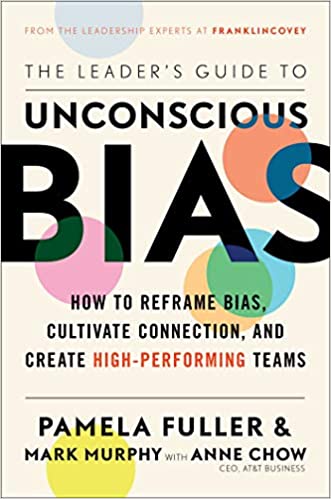
The Leader’s Guide to Unconscious Bias is one of the best diversity books for managers. Since managers have such great influence over hiring decisions and working environments, it is especially important for them to understand potential prejudices.
By exploring the neuroscience behind bias and championing a more mindful approach, the book teaches leaders how to recognize and overcome internal influences. The book also includes exercises and reflection spaces so readers can practice best practices.
The Leader’s Guide to Unconscious Bias is a useful tool for team managers. By challenging subtle preconceived notions, leaders can improve company culture, cultivate connections among colleagues, form more dynamic diverse teams, and empower underrepresented employees to excel.
Notable Quote: “One of the reasons our minds work against self-awareness is because it’s hard to admit that we have areas where we could improve. But when we practice self-awareness, we are constantly becoming more knowledgeable about ourselves. When we build self-awareness, we stop acting automatically and start making better decisions.”
Buy The Leader’s Guide to Unconscious Bias.
7. Blindspot: Hidden Biases of Good People by Mahzarin R. Banaji and Anthony G. Greenwald
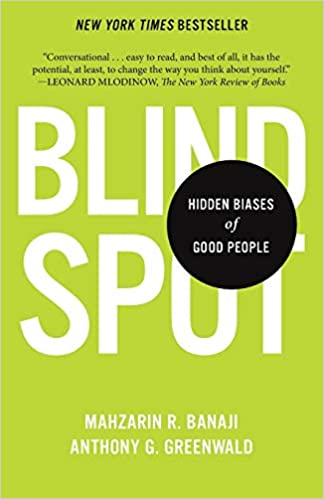
Blindspot is one of the best selling diversity books in recent years. Psychologists Mahzarin R. Banaji and Anthony G. Greenwald explore the subject of unconscious biases, examining how experiences and ideas subtly shape ways of thinking. Relying on scientific methods such as the Implicit Association Test, the authors show how to spot and confront preconceptions.
The book frames bias as a human characteristic rather than an individual character flaw, making it easier for readers to accept the truth of their own prejudice. Blindspot argues that not only “bad people,” hold secret biases. Rather, every person must analyze their assumptions, stop hiding behind good intentions, and aim to be more open and supportive of those unlike themselves.
Notable Quote: “Blindspots hide both discriminations and privileges, so neither the discriminators nor the targets of discrimination, neither those who do the privileging nor the privileged, are aware. No small wonder that any attempt to consciously level the playing field meets with such resistance.”
Buy Blindspot.
8. The 4 Stages of Psychological Safety: Defining the Path to Inclusion and Innovation by Timothy R. Clark
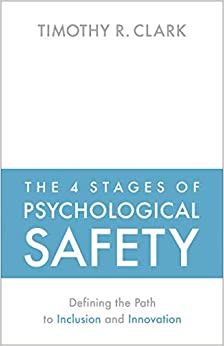
Taking a more scientific approach than many other inclusion books, The 4 Stages of Psychological Safety breaks the act of building empowering environments into four phases. Once employees feel included at work, they will gradually feel safe to learn and make mistakes, speak their minds, and eventually, push back against authority in ways that lead to organizational innovation and growth. Timothy Clark outlines the actions leaders can take to nurture these conditions and achieve psychological safety for all employees.
Notable Quote: “We thrive in environments that respect us and allow us to (1) feel included, (2) feel safe to learn, (3) feel safe to contribute, and (4) feel safe to challenge the status quo. If we can’t do these things, if it’s emotionally expensive, fear shuts us down.”
Buy The 4 Stages of Psychological Safety.
9. Diversity in the Workplace: Eye-Opening Interviews to Jumpstart Conversations about Identity, Privilege, and Bias by Bärí A. Williams
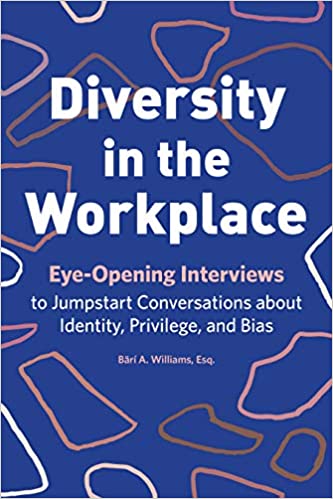
Diversity in the Workplace gathers firsthand accounts of minority experiences in the workplace. The book explores a wide range of distinguishers, including race, gender, age, ability, religion, and LGBTQ. While many diversity books focus on singular identities, Diversity in the Workplace gives a nod to intersectionality and the differences of experience involved in belonging to multiple minority groups. The book provides space for reflection at the end of each section, as well as tips for carrying out constructive conversations about inclusion with colleagues.
Notable Quote: “Be cognizant that not everyone has the appropriate language to describe what they are feeling or observing. Creating a space for these conversations also means realizing that some colleagues may not have the right vernacular but are willing to learn.”
Buy Diversity in the Workplace.
10. The Culture Map: Breaking Through the Invisible Boundaries of Global Business by Erin Meyer
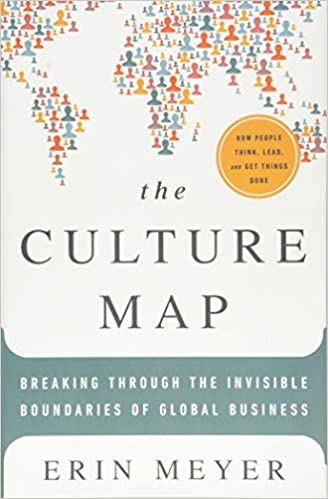
As the business world becomes more globalized, having international colleagues becomes the norm. Society greatly influences individual’s attitudes and approaches to work, and differences in cultures can lead to misunderstandings. The Culture Map is a guide to navigating internationally diverse workplaces. The book explores differences in factors like communication style, demeanor, and attitudes about authority across cultures. The Culture Map offers advice in areas such as performance reviews, sales pitches, and scheduling. This book is a great resource not only for accommodating diverse staff, but also for forging relationships with international clients and vendors.
Notable Quote: “When interacting with someone from another culture, try to watch more, listen more, and speak less.”
Buy The Culture Map.
11. The Remix: How to Lead and Succeed in the Multigenerational Workplace by Lindsey Pollak
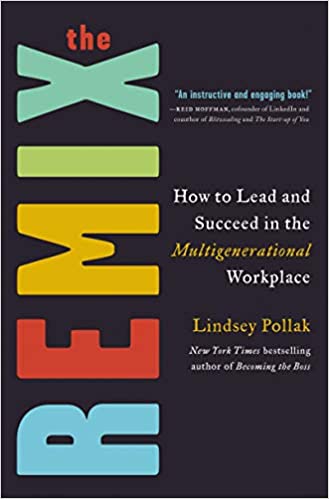
Diversity does not only apply to factors like race and gender, but also to age. The workforce currently consists of four generations with differing work-styles and ideals. Managing across life stages and experience levels can be a challenge. The Remix is a guide to leading multiple generations without alienating particular age demographics. The book offers advice about bridging gaps in communication, culture, and values and soliciting the best performance from every age group.
Notable Quote: “My approach to organizational change is to embrace the fundamental fact that none of us, of any generation, will survive if we remain static and rigid.”
Buy The Remix.
12. Better Allies: Everyday Actions to Create Inclusive, Engaging Workplaces by Karen Catlin and Sally McGraw
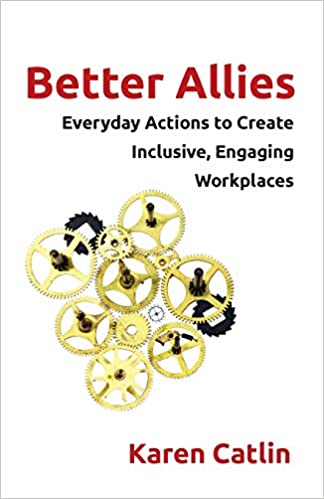
Better Allies is one of the best books on inclusion in the workplace. The book explains how to be a supporter and advocate for coworkers of different backgrounds, races, genders, sexual orientations and identities, ages, and abilities. Karen Catlin gives practical advice on implementing fair hiring practices, using inclusive language, and creating more opportunities for underrepresented groups. The book makes a distinction between ally-ship and savior-dom, explaining that efforts to protect marginalized identities can be patronizing and counter-productive.
Notable Quote: “Gatekeeping feedback is common, and often slips out unconsciously. If you’re in a position to give someone constructive comments, you may think you’re doing so based solely on their performance or role, but your choice of words may betray unconscious bias.”
Buy Better Allies.
13. Inclusify: The Power of Uniqueness and Belonging to Build Innovative Teams by Stefanie K. Johnson
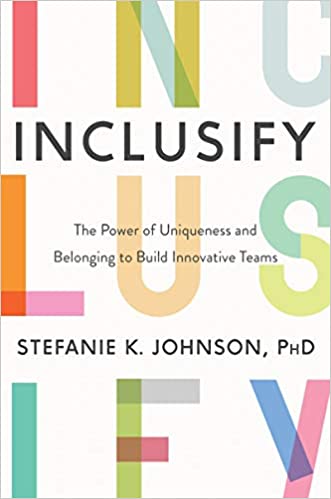
Inclusify is a leadership guidebook for creating diverse yet cohesive teams. While many organizations make efforts to recruit unique perspectives, these companies often fail to harmonize differing voices. Stefanie Johnson offers team building tips for creating unique yet united teams. Inclusify presents practical teamwork and management strategies that empower individuals while rallying the group around a shared sense of purpose. This book is a recipe for high-performing, inventive teams whose members stand out but still feel like a part of the whole.
Notable Quote: “These types of interactions are often meaningless to the person doing the excluding, but across research studies, subtle and often unintentional jabs like mistaking someone as being in a lower status position or calling them by another person of color’s name (often called microaggressions) have the same effects as, if not worse effects than, blatant discrimination on outcomes such as job performance, turnover, and mental health.”
Buy Inclusify.
14. Subtle Acts of Exclusion: How to Understand, Identify, and Stop Microaggressions by Tiffany Jana and Michael Baran
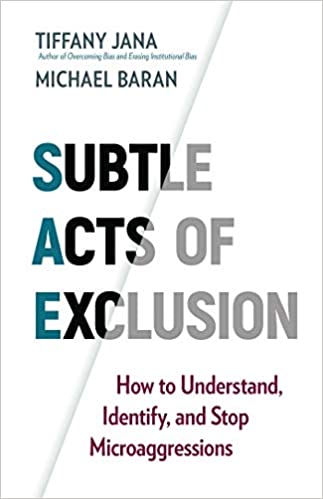
Subtle Acts of Exclusion examines microaggressions, or subtle phrases or actions that cause marginalized individuals discomfort or distress. This book is important because many folks think of racism as intentional, but innocuous behaviors can be just as harmful. Subtle Acts of Exclusion demonstrates how to avoid alienating group members, and presents a formula for building trust and rapport between team members of all backgrounds.
Notable Quote: “One of the most critical aspects of inclusion is that it must happen actively. When we just passively think of ourselves as good people but don’t do anything to actively include others, that creates passive exclusion.”
15. So You Want to Talk About Race by Ijeoma Oluo
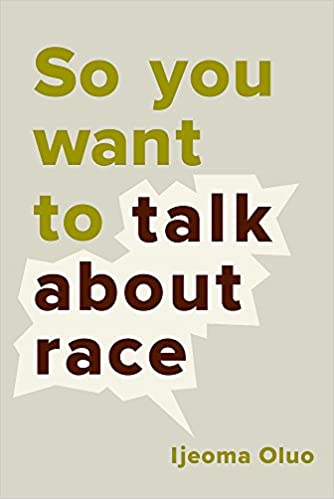
So You Want to Talk About Race is one of the best-selling books about diversity. Ijeoma Oluo drudges up all the most controversial talking points about race, offering clear and constructive ways to approach every conversation. The book covers concepts like police brutality, cultural appropriation, affirmative action, intersectionality, and privilege. The tone is equal parts entertaining, enlightening, and mobilizing. So You Want to Talk About Race is a great fit for professionals who want to know how to talk about race and what to do to promote racial justice inside of work and out.
Notable Quote: “You have to get over the fear of facing the worst in yourself. You should instead fear unexamined racism. Fear the thought that right now, you could be contributing to the oppression of others and you don’t know it. But do not fear those who bring that oppression to light. Do not fear the opportunity to do better.”
Buy So You Want to Talk About Race.
Conclusion
While advocates have pushed for more diversity and inclusion in the workplace for decades, movements have gained more momentum within recent years. The rise of social media has helped expose inequality and injustice. Not to mention, the general public has become more aware that even well-meaning gestures or throwaway comments can have unintended consequences.
As awareness grows, so does companies’ social responsibility to create more inclusive environments for all employees. While the journey towards equality may not be linear, DEI books can provide much needed clarity and guidance.
For more reading suggestions, check out our list of employee engagement books, books by women in business or this list of nonprofit books.
We also have a list of the best ideas for diversity and inclusion exercises, best ideas for National Disability Employment Awareness month and a list of Pride Month activities for work.
